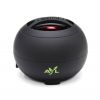trailman
Aspiring developer

Posts: 280
Reg: Dec 10, 2010
Sedona, az6,550
|
01/19/13 04:19 PM
(12 years ago)
|
| |
Kaybee
buzztouch Evangelist

Posts: 659
Reg: Sep 22, 2012
Perth, Australi...44,690  | 01/19/13 05:46 PM (12 years ago) |
| |
0z2000tv
Aspiring developer

Posts: 315
Reg: Sep 10, 2011
Nashville | 01/19/13 05:52 PM (12 years ago) |
| |
trailman
Aspiring developer

Posts: 280
Reg: Dec 10, 2010
Sedona, az6,550 | 01/19/13 05:55 PM (12 years ago) |
| |
trailman
Aspiring developer

Posts: 280
Reg: Dec 10, 2010
Sedona, az6,550 | 01/19/13 07:07 PM (12 years ago) |
| |
RandyJ
Lost but trying

Posts: 34
Reg: Dec 25, 2012
Alabama6,840  | 03/29/13 02:55 PM (12 years ago) |
| |
trailman
Aspiring developer

Posts: 280
Reg: Dec 10, 2010
Sedona, az6,550 | 03/29/13 03:02 PM (12 years ago) |
| |
Kahuna
Apple Fan

Posts: 137
Reg: Nov 18, 2011
Milan4,670 | 04/03/13 05:14 AM (12 years ago) |
| |
us_david
Code is Art

Posts: 41
Reg: Dec 27, 2010
San Francisco410 | 10/13/13 09:20 PM (11 years ago) |
| |
Login + Screen Name Required to Post
 Login to participate
so you can start
earning points.
Once you're logged in (and have a screen name entered in your profile), you can subscribe to topics, follow users, and start learning how to make apps
like the pros. Login to participate
so you can start
earning points.
Once you're logged in (and have a screen name entered in your profile), you can subscribe to topics, follow users, and start learning how to make apps
like the pros.
|